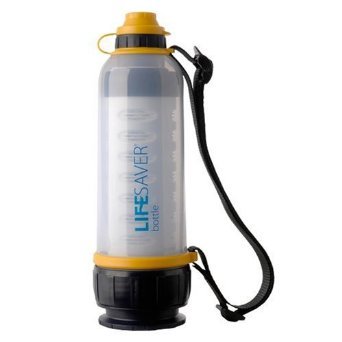Drinking water hazards
Disease-causing pathogens are not only present in the drinking water of third-world countries, and surprisingly, over the last century, the United States itself has been struck by numerous outbreaks of serious illnesses resulting from contaminated water. Untreated water can contain a whole range of elements that are highly dangerous to humans and animals alike, including Protozoa, bacteria, viruses and the larvae of parasites (such as roundworm). In addition, the liquid can potentially contain harmful chemical pollutants such as pesticides, metals and synthetic organics. Common metallic contaminants such as copper and lead can be treated reasonably easily by increasing the pH using soda ash or lime, but the same cannot be said of the presence of aluminium or zinc.
How is water made safe?
There are a range of purification techniques that can be adopted in order to treat contaminated water. These include heat, filtration, activated charcoal absorption, chemical disinfection (with the likes of chlorine and iodine, for instance), ultraviolet purification, distillation and, finally, flocculation. Some of these methods can be used in conjunction with one another to ensure the safety of drinking water.
For practicality, a range of portable systems have been developed to meet the requirements of numerous groups, from the military, to travellers and even sporting enthusiasts. Portable water purification devices are independent, hand-held units turning untreated water from lakes, rivers or resting groundwater to safe and pure drinking water. These personal devices and methods are potentially life saving, making water potable and free from disease-causing pathogens. The devices have come a long way in recent years, and manufacturers of portable water purification devices are now producing systems that filter contaminants the size of nanometers (i.e. a billionth of a meter), such is the advanced level of technology used.
The Lifesaver bottle
A leading water filter device, the Lifesaver is robust and portable, and capable of holding producing up to 6,000 litres of clean water. With the ability to hold up to 750ml at one time, it is intended for individual use and has been specifically adapted for those setting off to remote areas and people embarking on extreme adventure challenges or expeditions, where safe water is not readily available. The bottle allows water to be filtered as and when the owner needs to drink from it. It has been designed to carry dirty water in this way, to reduce the risk of recontaminating the previously safe fluid.
With products like the Lifesaver bottle on the market, you can feel reassured that viruses, bacteria, cysts and parasites from dirty water are being eliminated with the use of effective filtration technology. Not only that, the Lifesaver ensures that the water you are drinking is odourless and doesn’t taste contaminated. Places where the Lifesaver bottle has had success are in the wilderness, in the desert, the jungle, glacial environments, urban environments and on vehicle-based expeditions. Wherever your next adventure takes you, you can rely on a portable purification device to protect you from dangerous water sources.










Comments are closed.